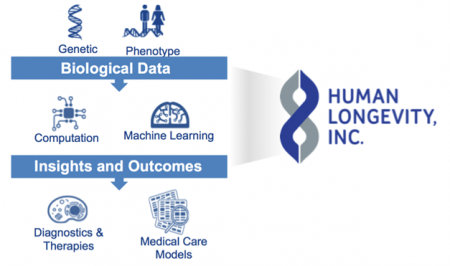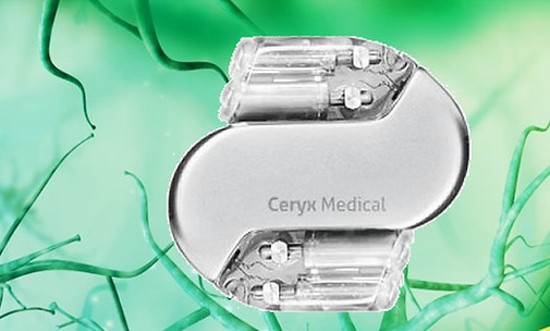June 21, 2015 – In his latest mindshare with readers Peter Diamandis, founder of the X-Prize and Planetary Resources, to name just two of his many ventures, shares his thoughts on genomics and deciphering our personal DNA.
———-
Machine learning and data science will do more to improve healthcare than all the biological sciences combined.
What’s the Big Idea?
Your genome consists of approximately 3.2 billion base pairs (your DNA) that literally code for “you.”
Your genes code for what diseases you might get, whether you are good at math or music, how good your memory is, what you look like, what you sound like, how you feel, how long you’ll likely live, and more.
This means that if we can decipher this genomic “code,” we can predict your biological future and proactively work to anticipate and improve your health.
It’s a data problem¬ – and if you are a data scientist or machine-learning expert, it is the most challenging, interesting and important problem you could ever try to tackle.
In the simplest terms, sequencing a genome means turning DNA into a series of four letters that looks like this:
ACAAGATGCCATTGTCCCCCGGCCTCCTGC
Each person’s genome produces a text file that is about 300 gigabytes.
When we compare your sequenced genome with millions of other people’s genomes AND other health data sets, we can use machine learning and data mining techniques to correlate certain traits (eye color, what your face looks like) or diseases (Alzheimer’s, Huntington’s) to factors in the data and begin to develop diagnostics and therapies around them.

It’s a Translation Problem, Like Google Translate
HLI is creating an “integrated health record” for everyone entering its database. The data sets created will include the following:
- Genomic: The 3.2 billion nucleotides from your mother, and the 3.2 billion nucleotides from your father.
- Microbiome: The genome of the 100 trillion + microorganisms living in our bodies. There are 10 times as many microbial cells than human cells, and their effects on our bodies are enormous and massively understudied.
- Imaging/MRI: High resolution detailed imagery of our brain, organs and body.
- Metabolome: The 2,300 small molecule chemicals in your bloodstream.
- Physiological Health Data: All of the data we can collect on ourselves. Our vital signs, blood glucose levels, micro RNA’s in the bloodstream, heart rate, VO2…
Translating between all of this data and your health outcome is, metaphorically, similar to how Google Translate works.
Google Translate (GT) uses a process called statistical machine translation, which means that GT generates translations based on patterns found in large amounts of written text. Rather than attempt to teach the computer every rule of every language, this approach lets the computer discover the rules for themselves based on statistically significant patterns in the data. Once it finds these patterns (patterns that are unlikely to occur by chance), it can use this “model” to translate similar text in the future. With millions and millions of documents/websites/
Meet Franz Och, HLI’s Chief Data Scientist
Franz is a renowned expert in machine learning and machine translation. He spent 10 years at Google as a Distinguished Research Scientist and the Chief Architect of GT, literally building the system from the ground up. Now, Franz is Human Longevity Inc.‘s Chief Data Scientist, responsible for developing new computational methods to translate between all of the human biological information.….and he’s building one of the most impressive teams I’ve seen.
When you ask Franz why he’s so excited about HLI, his answer is twofold: the mission and the challenge. He explains:
“The big thing is the mission — the ability to affect humanity in a positive way. If you are a data scientist, why focus on making a better messaging app or better Internet advertising, when you could be advancing the understanding of disease to make sick people better and of aging to make people live longer, healthier lives?”
As far as the challenge, he goes on: “The big mission is to learn how to interpret the human genome — to be able to predict anything that can be predicted from the source code that runs us.”
HLI is recruiting and looking for:
- Very strong software engineers who can build reliable, high-quality, high-performance software
- Machine learning experts
- Statistics experts
Many people with these areas of expertise often don’t know about biology and health, and that is okay. Frank states “we need the outside perspectives to help us tackle this problem in new ways.”
At the same time, we are also looking for people with the relevant biology knowledge (genomics, immunology) who are excited to approach their domain in a new way as a massive data and machine-learning problem.
———-
So if you have read this blog and have the skills and interest in what HLI is doing then go to the link provided three paragraphs above.

















